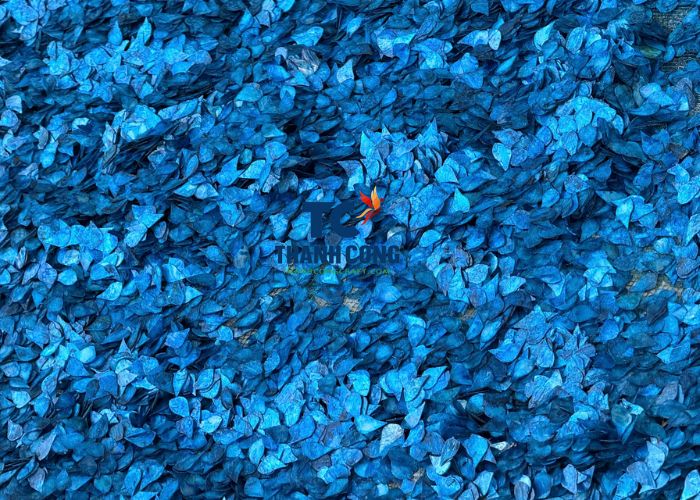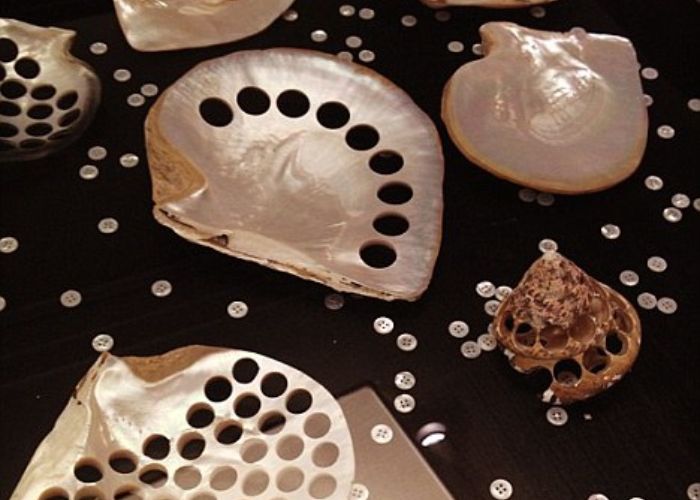Mother of pearl buttons, with their shimmering and delicate beauty, are not just a fashion accessory but also a traditional art form that has existed for centuries. But have you ever wondered, what are mother of pearl buttons? and how do I clean mother of pearl buttons?. These questions go beyond simply preserving a delicate item; they involve understanding how to care for and maintain their natural beauty. In this article, we will explore the origins of mother of pearl buttons, how they are crafted, and tips for cleaning and caring for them properly.
Contents [hide]
Mother of pearl buttons are buttons made from the iridescent inner shell of certain mollusks, such as oysters and abalones. Renowned for their beauty and unique luster, these buttons have been used in various garments and accessories for centuries. They are often favored for their elegance and durability, making them a popular choice in both fashion and craft.

Mother of pearl, also known as nacre, is characterized by its smooth texture and iridescent sheen, which can display a spectrum of colors depending on the angle of light. This natural material is lightweight yet strong, making it suitable for button production. Each mop button is unique, showcasing distinct patterns and hues that add to its charm. Additionally, mother of pearl is relatively resistant to wear and tear, although it does require proper care to maintain its luster.

The use of the mother of pearl in button-making dates back centuries, with evidence of its use in ancient civilizations such as the Egyptians and Romans. These cultures appreciated the material not only for its beauty but also for its availability, as shells were often found in coastal areas. By the 19th century, the fashion industry embraced mother of pearl buttons, and they became a staple in high-quality clothing. Their popularity surged during the Victorian era, when intricate designs and embellishments were highly sought after.
Today, mop buttons continue to be valued for their timeless elegance and craftsmanship, remaining a favored choice in both traditional and modern fashion.
Mother of pearl buttons are crafted from the nacre layer of mollusk shells, such as those from oysters and abalones. The process begins with sourcing high-quality shells, which are carefully selected for their iridescent beauty and strength. Once the shells are obtained, they undergo several steps:
- Cutting: The shells are sliced into thin sheets to reveal the nacre layer. This requires precision to ensure the layers maintain their natural luster and unique patterns.

- Shaping: The cut sheets are then shaped into circular or custom designs for the buttons. This may involve using specialized tools to create uniform sizes and edges.
- Polishing: After shaping, the buttons are polished to enhance their shine. This step is crucial as it brings out the vibrant colors and iridescence characteristic of mother of pearl.
- Drilling: Holes are drilled into the buttons for attachment to garments. This must be done carefully to avoid cracking the delicate material.
The entire process is labor-intensive and requires skilled craftsmanship, contributing to the higher cost of mother of pearl buttons compared to those made from other materials. The result is a beautiful, durable product that adds elegance to any piece of clothing or accessory.
3. Identifying Mother of Pearl Buttons
Identifying the MOP buttons involves observing several key characteristics that distinguish them from other materials.
- Visual Characteristics: MOP buttons are known for their stunning iridescence, which can display a range of colors depending on the angle of light. When examining the button, look for a smooth, shiny surface with unique patterns and swirls that vary from piece to piece. The colors can range from creamy white to pink, green, and even blue, often reflecting a rainbow-like sheen.
- Texture and Weight: The texture of buttons is smooth and slightly cool to the touch. Unlike plastic buttons, which may feel lightweight and somewhat flimsy, mother of pearl has a more substantial weight. This density gives it a luxurious feel, and when held, it may feel more robust compared to synthetic alternatives.

- Sound: Another way to identify mother of pearl buttons is by the sound they make when tapped together or against a hard surface. Mother of pearl produces a softer, more muted sound compared to the sharp clink of plastic buttons. This subtle sound can be a helpful indicator of authenticity.
- Using a Magnifying Glass: For a closer inspection, using a magnifying glass can be beneficial. Under magnification, you can observe the intricate patterns and layers of nacre more clearly. Genuine mother of pearl will display natural variations and textures that are difficult to replicate in synthetic materials.
By paying attention to these visual, tactile, and auditory characteristics, you can confidently identify mother of pearl buttons and appreciate their unique beauty.
4. Caring for Mother of Pearl Buttons
Caring for mother of pearl buttons is essential for maintaining their beauty and longevity. Regular cleaning, proper storage, and timely repairs are key practices to keep these elegant buttons in excellent condition.
- Cleaning: To clean the buttons, mix a few drops of mild soap with lukewarm water. Avoid harsh chemicals that can damage the nacre. Use a soft cloth or a soft-bristled brush to gently wipe the buttons, then rinse with lukewarm water and pat dry. Avoid soaking the buttons for long periods, as this can weaken them.
- Storing: Proper storage is crucial to prevent damage. Store buttons in a separate compartment or pouch to avoid scratches. Keep them away from direct sunlight and excessive heat, and ensure the storage area is dry and well-ventilated to prevent humidity-related issues.
- Repairing: For minor chips or scratches, gently buff the area with a soft cloth or use a specialized polish. If a button becomes loose, reattach it with matching thread. For significant damage, consult a professional jeweler or tailor who specializes in mother of pearl for the best repair options.
By following these care guidelines, you can ensure your buttons remain beautiful and functional for years to come.
4. FAQs
Yes, mother of pearl buttons can be quite valuable. Their value stems from their natural beauty, durability, and the craftsmanship involved in making them. High-quality mother of pearl buttons, especially those with unique patterns and colors, are often sought after in fashion and crafting. Additionally, vintage or antique mother of pearl buttons can be particularly valuable to collectors. Overall, their elegance and quality contribute to their worth in the market.
Mother of pearl buttons can be used creatively and practically in various ways. They can be sewn onto clothing, bags, or hats as functional or decorative elements, adding elegance to outfits. In jewelry making, they can enhance necklaces, bracelets, or earrings. Craft enthusiasts can incorporate them into scrapbooking, card making, or mixed media projects. Additionally, they can embellish home decor items like picture frames or boxes. For collectors, displaying mother of pearl buttons in shadow boxes showcases their charm. These versatile uses allow you to enjoy mother of pearl buttons in many creative forms.
Yes, mother of pearl buttons can be considered somewhat fragile compared to buttons made from synthetic materials. While they are durable, they can chip or crack if subjected to excessive force or impact. It’s important to handle them with care and avoid dropping or hitting them against hard surfaces to maintain their integrity and beauty. Proper cleaning and storage also help protect them from damage.
If you have any further questions, don’t hesitate to send thanhcongcraft an email us at info@thanhcongcraft.com or message us at WhatsApp: +84967485411. Hope to serve you soon! Best regard!


